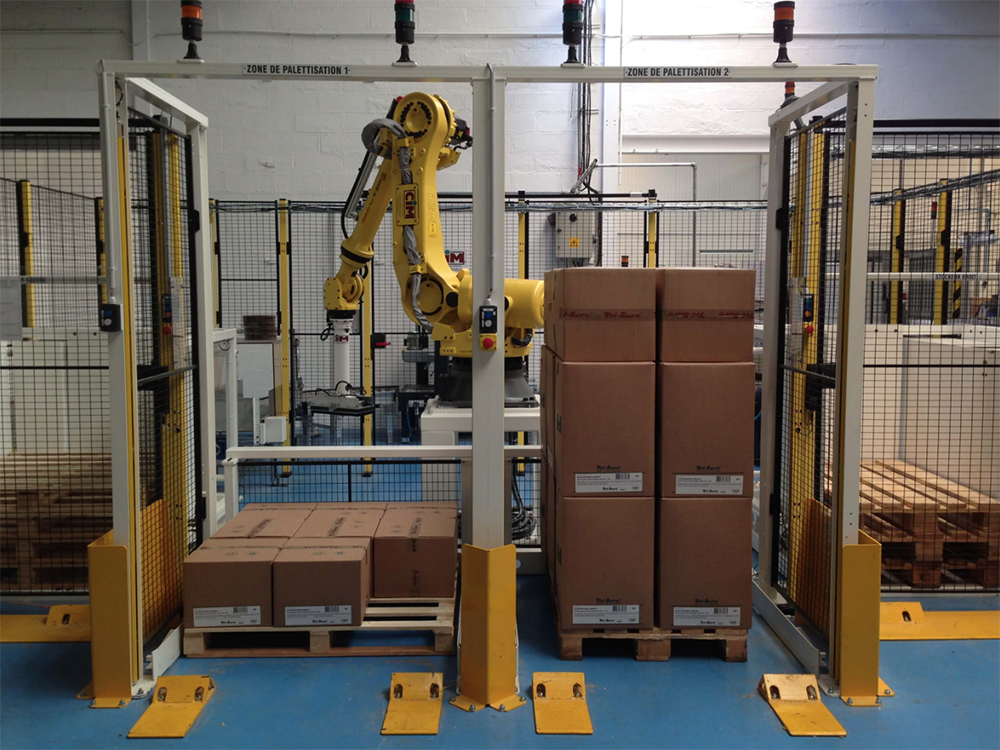The palletizing robot is indispensable for automating the palletizing of products within an industry. It considerably reduces effort and optimizes working time. What exactly is a palletizing robot? What advantages does such a tool offer?
Role of a palletizing robot
Palletizing robots are used in industry to move goods. These are removed from the platforms or conveyor belts and placed on a pallet. All this is done automatically thanks to a fully decentralized system. Withautomation, there is little or no human intervention in the movement of products or cartons. It simply supervises the work carried out by the industrial robot, and signals or corrects any calibration errors.

Advantages of a palletizing robot
There are many advantages to using a palletizing robot. Here are just a few examples:
Safe working environment
Using a palletizing robot makes the working environment safer for workers, especially operators. By drastically reducing the weight and difficulty of the work, the special machine reduces the operator’s risk of contracting work-related illnesses.
The automated system will also enable them to avoid work-related accidents linked to the handling of heavy loads.
It also helps maintain the worker’s physical condition. It helps avoid contact with substances that could be harmful to the body.
Offers impeccable results
The palletizing robot does the job perfectly. The use of a robot will make it possible to avoid 100% of the inaccuracy errors that humans can make (dropping products, tampering with packaging, etc.). The palletizing robot also eliminates the hazards associated with product transport. Without these hazards, the packaging will be in perfect condition.
Saves time
Saving time is one of the main benefits of using a palletizing robot. The difference in performance is very noticeable when compared to that of a regular operator.
Easy to maintain
Despite their efficiency, palletizing robots are special machines that require relatively simple maintenance. This simplicity of design also makes curative maintenance fairly straightforward.
Design flexibility
In most cases, palletizing robots can be customized in a number of ways.
The robot
For the palletizing robot, you can update the dimensions of your special machine. It is carried out by professionals using simulation software. This sizing enables the robot to be adapted not only to its working environment, but also to its intended use. The various settings are nevertheless made in strict compliance with the standards recommended by the manufacturer. On this point, there’s no need to worry. Palletizing robots can be used anywhere.
What’s more, the robots are designed to be highly intuitive. No special skills are required to use them. Anyone can use this type of palletizing robot, so it’s easy to integrate them into the routine of your operators, for whom these robots will often make life easier.

The grip
Gripping may vary depending on the use of the palletizing robot. The flexibility of this type of robot is also demonstrated by its ability to use different gripping systems (for example, when palletizing jars, you can use simple suction with a suction pad).
You can use pneumatic actuators or electric axes to create parallel grips. You can also move cardboard boxes that have certain rough edges, and much more besides.
These different uses are only possible with a plurality of gripping systems.
Optimization with peripherals
Palletizing robots are designed to be highly efficient. However, to optimize their capabilities, it’s a good idea to combine peripherals in order to multiply their functions.
The most commonly used peripherals are conveyors. Depending on the accessory chosen, the robot can perform many additional tasks. So it’s easy to find a task where it’s cost-effective to have a palletizing robot work instead of a human operator.



